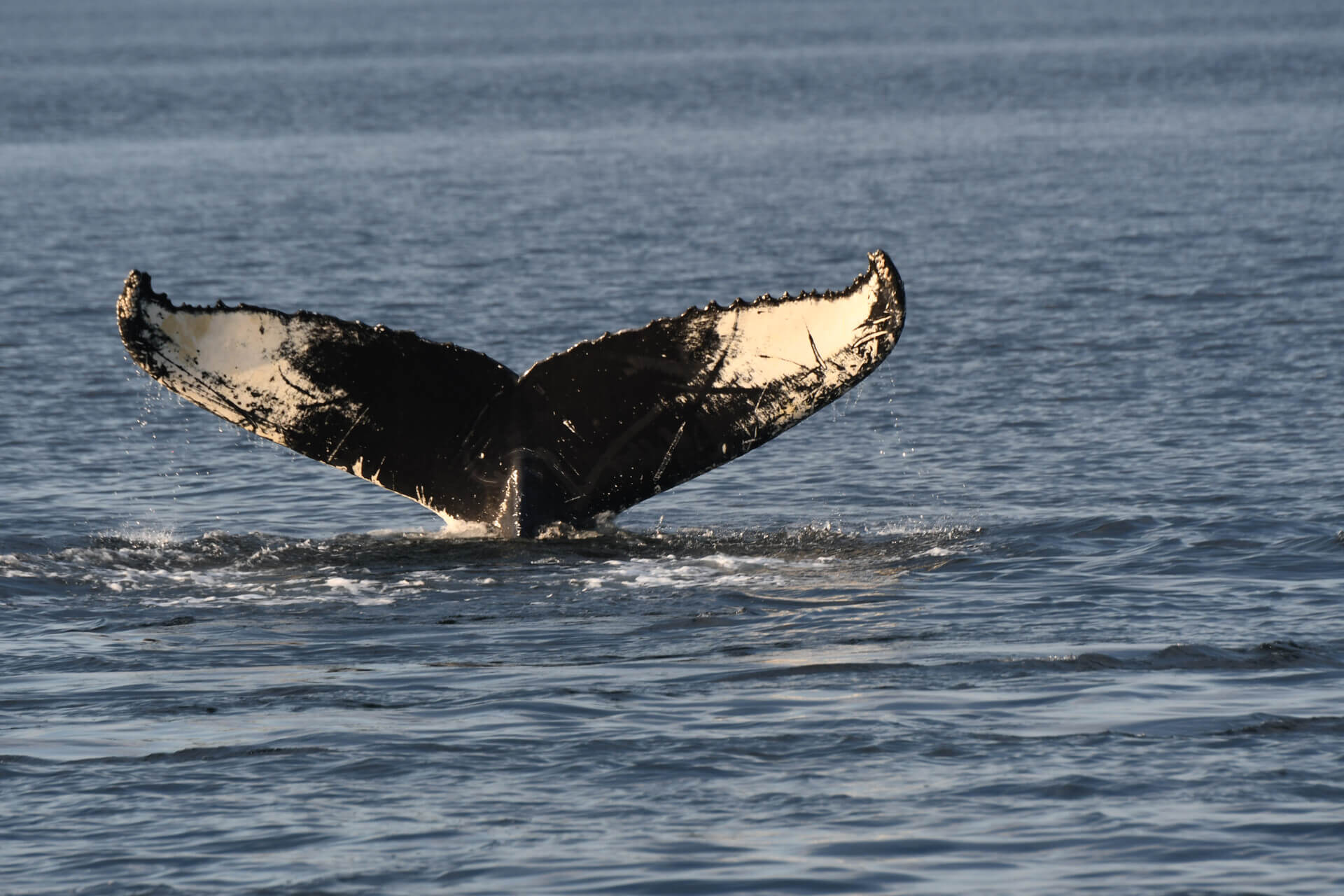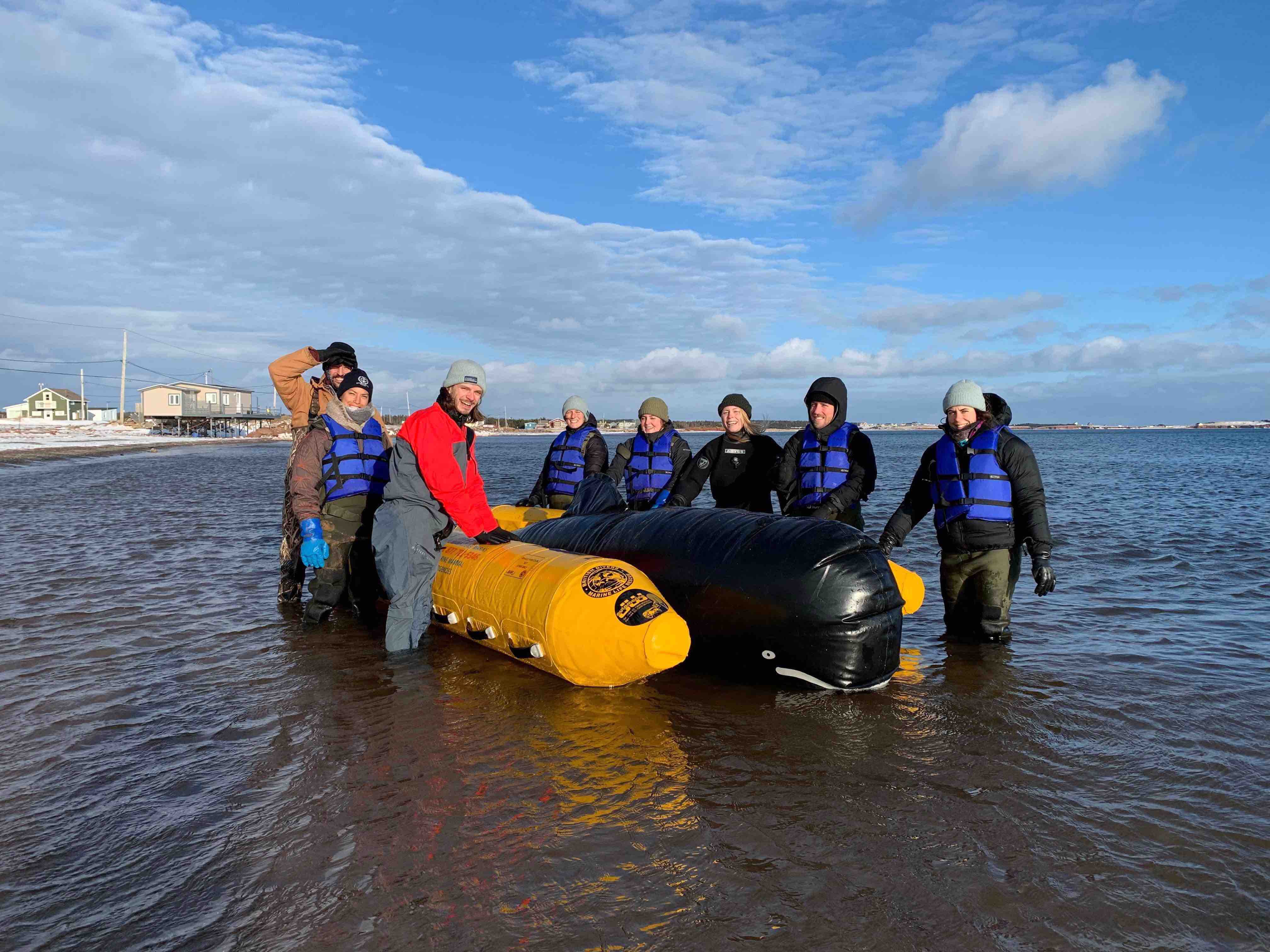It’s the low season for the call centre of the Quebec Marine Mammal Emergency Response Network; a single case has been handled up until this week, that of a young harp seal present in an ice fishing sector in Contrecoeur. Last April 25 at noon, Mr. Pierre-Henry Fontaine, a Network collaborator and owner of the skeleton museum on Île Verte, reported the second case of the season, a beluga carcass found on the shoreline. The 3.5-metre long female was in all likelihood exposed by the melting ice. Being in an advanced state of decomposition, the carcass was not a good candidate for a necropsy. Nevertheless, high-level sampling was performed by Mr. Fontaine: one piece each of skin, fat and muscle was taken as well as a single tooth to determine the age of the animal, which appears to be an adult given its size.
Carcasses that speak volumes
Each season the Network handles an average of 15 to 20 beluga carcasses. If the carcass is fresh enough, it will be transported to the Université de Montréal’s faculty of veterinary medicine (FMV) in Saint-Hyacinthe, where a necropsy will be performed. Based on belugas examined between 1983 and 2012, it was determined that the most frequent causes of mortality in young belugas are infectious diseases of parasitic origin, in particular verminous pneumonia. Infectious diseases of bacterial origin as well as cancers, especially those of the digestive system, are believed to be the main causes of mortality in adult belugas. However, cancer rates are declining; no beluga born after 1971 has succumbed to this disease, which coincides with the implementation of measures to ban and better regulate the use of a number of substances and materials considered to be environmental contaminants. Other causes of mortality are collisions with boats, inanition (food deprivation), entanglements in fishing gear, as well as saxitoxin poisoning produced by the alga Alexandrium tamarense.





